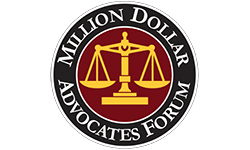Disbarment – the loss of a law license – is an extreme sanction. Yet, in a recent case, Maryland’s top court rejected an attorney’s argument that his emailed criticism of several of Maryland’s government and legal officials was protected as free speech and upheld the decision to yank James Albert Frost’s law license.
An attorney’s knowingly false statements impugning the integrity and qualifications of several judges and public legal officers constitute a violation of the Maryland Lawyer’s Rules of Professional Conduct (MLRPC) and are not protected speech under the First Amendment to the United States Constitution, the Court of Appeals has ruled.
In addition, where an attorney repeatedly makes false allegations about the qualifications or integrity of “a judge, adjudicatory officer or public legal officer,” without any explanation or investigation into the allegations, he has demonstrated a lack of fitness to practice law and disbarment is an appropriate sanction, the state’s top court said.
But the decision was not unanimous. Judge Robert N. McDonald said he couldn’t agree with the majority decision because the primary purpose in an attorney discipline proceeding is to protect the public from inept lawyers, not to protect public officials from criticism. McDonald said he would suspend Frost for his failure to respond adequately to the AGC’s inquiry but was not comfortable disbarring him based on what appeared to be an expression of opinion.
Frost was admitted to the Maryland Bar in June 1972. He does not maintain an office for the practice of law. In April 2012, he wrote an e-mail to his ex-wife calling various Maryland state judges and officials, among other things, “lawless,” “corrupt,” “weak” and described one high-placed Maryland political leader as a “pretty boy politician.” Frost was apparently angry over what he described as an “illegal arrest” that resulted in his spending 87 days in county jail.
Frost emailed a copy of the communication to three attorneys, including George Meng, a Maryland personal injury lawyer. Frost did not know Meng. Meng responded by emailing Frost and asking why the email was sent to him. Meng also directed Frost to the rules for lawyers’ conduct and asked Frost to explain how the email was not a violation of those rules. Frost’s only response was to snail mail Meng a letter that did not respond to the question. Meng then filed a complaint with the Attorney Grievance Commission (AGC) of Maryland. The lawyer/investigator for the AGC sent a copy of the complaint to Frost and asked for a response in about 30 days. Frost said his statements were protected by the free speech clause of the First Amendment and, in a second letter, Frost scolded the AGC for getting involved. The AGC asked Frost to substantiate his claims. Although he sent copies of his letters to the members of the AGC, Frost did not provide a substantive response to the Bar Counsel’s requests for information.
In an evidentiary hearing for which Frost did not appear, the judge noted that Frost had made several statements knowing them to be false and with reckless disregard for their truth or falsity. The judge also found that Frost violated the rules when he failed to provide a substantive response to the AGC’s letters. The hearing judge found by “clear and convincing evidence” — a very high legal standard – that Frost’s actions were a violation of several sections of Maryland’s rules of conduct for attorneys.
Under those rules, an attorney is expected to respond to a lawful inquiry from the AGC, even if the attorney views the complaint as frivolous. In addition, another rule provides that a lawyer shall not make a statement that the lawyer knows to be false concerning the qualifications or integrity of a judge or a public legal officer or a candidate for election.
The AGC recommended disbarment for the unsubstantiated badmouthing of the judicial and political officials. Frost asked the court to dismiss the case, arguing that his statements were protected by the Free Speech Clause of the First Amendment and that there was insufficient service of process.
The decision then went up to the Court of Appeals. The court concluded that the facts were as established by the hearing judge and agreed with the hearing judge that Frost had violated the rules of professional conduct.
The court then turned its attention to the proper remedy for the violation. Sanctions are put into place to protect the public and the public’s confidence in the legal profession, not to punish attorneys, the court said. Sanctions protect the public when they prevent conduct and remove those who are unfit to continue in the practice of law. The court noted that it had recommended disbarment in a similar case.
The Maryland personal injury lawyers at Belsky & Horowitz are experienced in negligence, auto accident, medical malpractice and other types of legal matters. Contact us through our online contact form or call us at 410-234-0100 so that we can help you with your legal matters.






